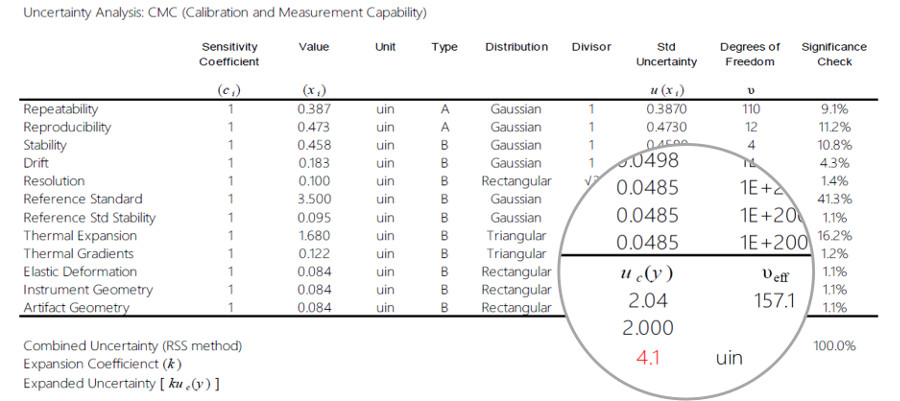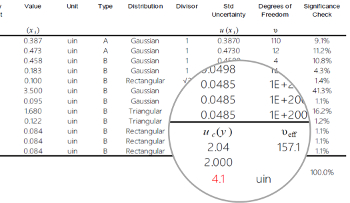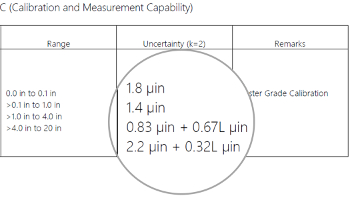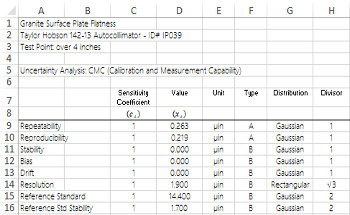Hire Me To Calculate Measurement Uncertainty.
Download A Sample Uncertainty Budget Report.
Download Now
Uncertainty Budgets for ISO17025 Accreditation.
Get accredited with reports that show how your uncertainty in measurement is calculated.
What is an Uncertainty Budget
An Uncertainty Budget is a statement of measurement uncertainty, the components of that measurement uncertainty, and their calculation and combination.

-
Why You Need My Uncertainty Budgets
Here are 4 great reasons to hire me.
Stop Stressing About Measurement Uncertainty.
Just enter your information to get started!
-
Get Your FREE Quote
Want to Calculate Uncertainty Yourself? Try my measurement uncertainty calculator to create your own uncertainty budgets > Yes, I Want To Calculate My Own Uncertainty.
How it Works
-
-1-
Collect
First, I collect your data: calibration reports, Type A data, and PT Test results.
-
-2-
Calculate
Next, I analyze your data and use an uncertainty budget to estimate measurement uncertainty.
-
-3-
Deliver
Then, I deliver the uncertainty budget to you in Adobe PDF report and MS Excel spreadsheet.
What You Will Get
-

-
Uncertainty Budgets
See how your measurement uncertainty is calculated.
-

-
CMC Uncertainty Summary
Easily update your Scope of Accreditation. Copy & Paste.
-

-
Excel Uncertainty Budgets
Update your own uncertainty budgets. All formulas included.
-

-
I calculate uncertainty for calibration and testing laboratories seeking ISO17025 accreditation. My uncertainty budgets are designed to be easy to read, share, and update. If you are struggling to prepare for your assessment or just need some advice, contact me to see what I can do for you.
-Richard Hogan, M.Eng.
Email Me
Frequently Asked Questions
-
How it works
First, I collect your Type A and calibration history data. Next, I analyze that data to determine the magnitude of uncertainty. Then, I calculate the uncertainty and issue a report of my findings. -
What’s it cost
Project pricing varies with the size and complexity of the project. Most uncertainty analysis cost $600 per CMC, but can range from $200 to $2,400 per CMC. -
How long does it take
The duration of a typical project varies by the size of the project. Most small projects are completed in a month. While larger project may take up to 3 to 6 months. -
What do I get
Upon completion of the project, you will receive a report for each uncertainty analysis performed. Each report includes a summary with the CMCs for your scope of accreditation and the associated uncertainty budgets.